Tissue testing is a useful tool for producers of all crops and species. However, it is often overlooked. When plant analysis is paired with routine soil testing, visual observation, and knowledge of the field, it can be a valuable tool in efficient crop production management. Additionally, tissue testing can aid in reaching yield goals.
There are two strategies that are used for plant tissue sampling. First, if there are poor areas of a field, use a diagnostic approach. This serves as a tool to identify deficiencies. Compare the poor area to a healthy area of the field.
Second, if plants are not showing deficiencies, use a monitoring approach. This gives a farmer the opportunity to make the most of fertility dollars by applying only what the crop needs. It also serves as a report card for future fertility decisions. This blog will focus on the monitoring approach.
How do I take a sample?
For the monitoring approach, we recommend sampling six times throughout the growing season. For corn, this would be:
- 3-5 leaf
- 6-9 leaf
- 10-14 leaf
- 15-18 leaf
- VT
- Brown Silk.
Nutritional requirements change throughout the plant’s growth and development. So, be sure to correctly stage your crop and sample the appropriate plant part. We’ve created a convenient kit to make sampling simple. You can order it from our website here.
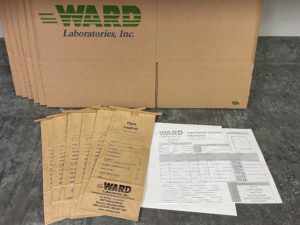
To take a sample, follow these steps:
- First, identify a sampling area. We recommend a field or a specifically managed zone within the field.
- Second, determine the crop growth stage.
- Third, consult the chart below for proper plant part to sample based on growth stage.
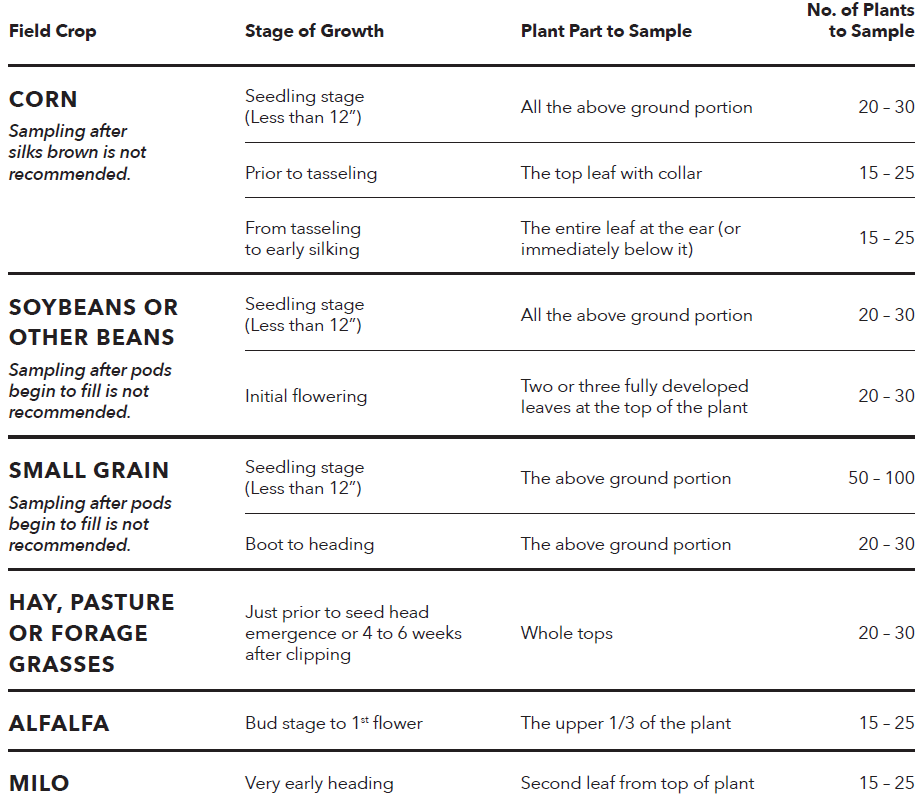
Plant Tissue Sampling Procedure - Next, remove the appropriate plant part.
- Then, repeat on 15-25 plants in representative areas of the field.
- Fold the leaves and place them in a breathable paper bag.
- Fill out the information on the plant bag including:
- your name and/or business name
- sample ID
- crop
- growth stage
- analysis desired
- Finally, drop off your samples at the lab Monday through Friday 8am-5pm or place in after-hours drop boxes. Samples can also be shipped to us at 4007 Cherry Ave, Kearney, NE 68847.
You can view a video of this process on our YouTube Channel.
How do I interpret my Tissue Testing results?
After submitting samples, a report will be emailed to you with the amount of each nutrient in the plant. A bar graph shows if each nutrient is “deficient,” “low,” “sufficient,” “high,” or “excessive” in the plant. Again, this is all crop and growth stage specific, so properly labeling samples is crucial!
The Ward Guide offers a more in-depth explanation of interpretation for many plant species also.
If your samples are listed in the deficient or low category, consider in-season management options. If you catch the deficiency early enough in the growing season, you may be able to apply additional nutrients with a foliar fertilizer during a post emerge herbicide application. In pivot irrigated areas, additional nitrogen and micronutrients may be applied through the pivot. Many irrigated producers in Nebraska use pivots to “spoon feed” nitrogen to the crop at the growth stages when it needs it most. In this instance, a plant analysis report is critical to ensure correct nitrogen application rates are used both for optimal plant health and growth as well as environmental stewardship.
It’s also important to consider the economics of in-season fertility correction. While foliar fertilizers may be a good option for this year’s crop, some instances of deficiency correction may be better resolved with off-season applications of dry fertilizers, manures, or other soil amendments. Ward Laboratories Inc. professionals can review your report with you and help you determine specific fertilizers and application methods or other management practices that can help correct problems.
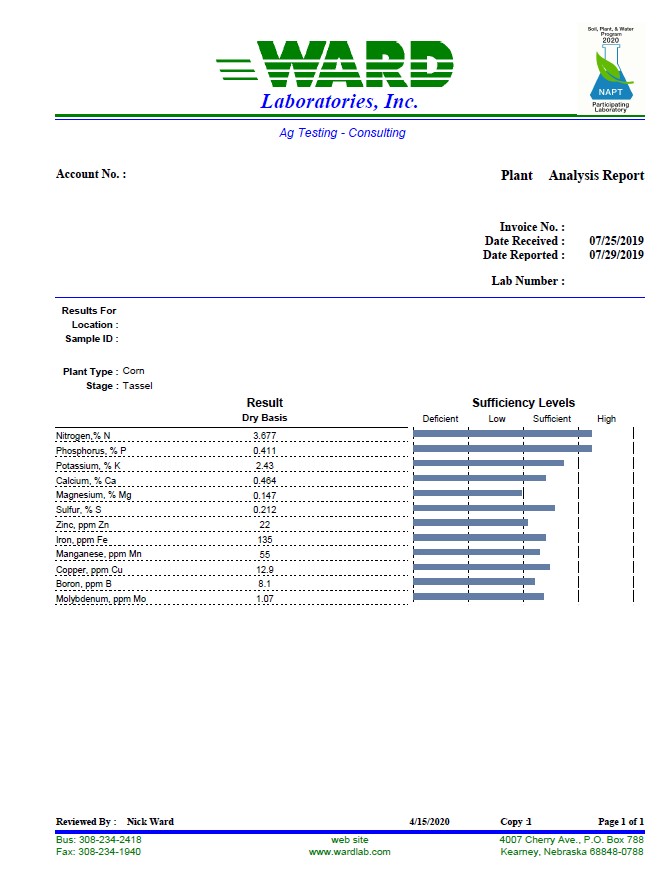
Is tissue testing still useful if I don’t have the means to adjust fertility in-season?
YES! Although an advantage of plant analysis is in-season management to correct deficiencies, there is still value to be found. As you collect plant and soil test data over time, you will be able to determine upward or downward trends in comparison to yield that will aid in future decisions relating to lime and fertilizer applications.
So are my plants hungry?
There’s only one way to find out—submit a sample for plant analysis to Ward Laboratories! Waiting for visual deficiency symptoms or yield results at harvest could be costly to your operation and slow progress on your goals. Tissue testing is the best option to ensure your plants have the fertility it needs when they need it.
Updated June 2022.

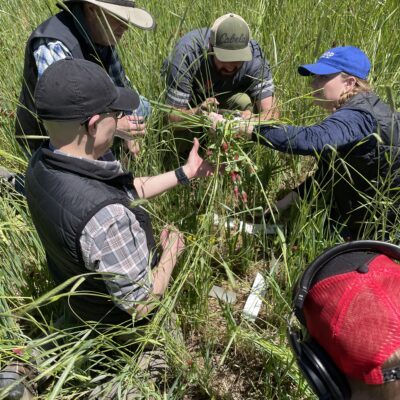
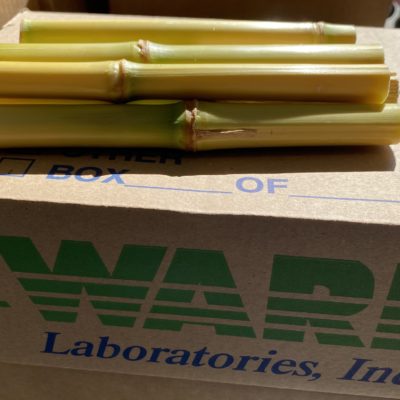
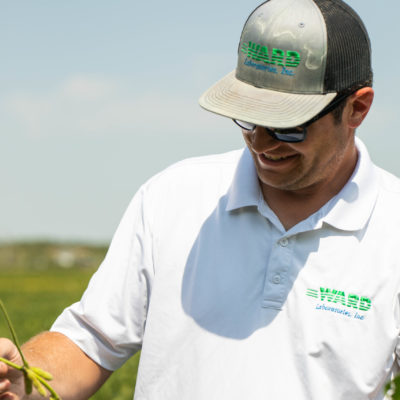

[…] to Ward! Here, we strive to provide quality analytical analysis of agricultural samples. Soil, plant, and fertilizer reports allow farmers to make informed decisions regarding field amendments. […]